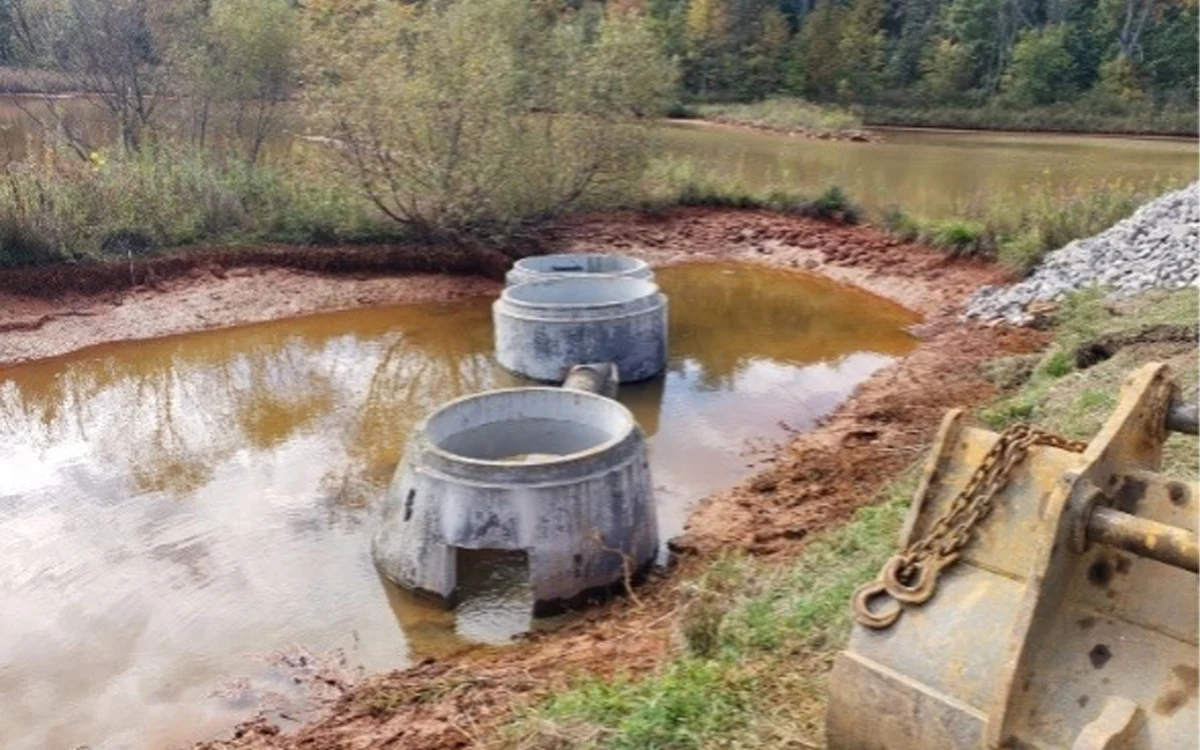LATROBE, PA — The Monastery Run Improvement Project (MRIP) at Saint Vincent College recently completed a $263,295 grant-funded project that significantly improved the effluent water quality in Wetland #1 and Wetland #2 along Four Mile Run in the Loyalhanna Creek Watershed.
The project ran from June 2019 to December 2023, and involved diverting mine water upwellings from Wetland #1 to Wetland #2 for treatment. The transfer of water allowed for more efficient treatment in both systems and the water entering Four Mile Run was significantly improved, with a total iron reduction of at least 75 percent and significant dissolved iron reduction in both the Wetland #1 and Wetland #2 outputs.
“The Monastery Run Improvement Project has been doing its job of improving the Loyalhanna Creek since 1997, but the systems do benefit from modifications when new ideas and technologies to treat mine water arise,” project director Beth Bollinger said.
Wetland #1 has large volumes of water, which makes treatment difficult. This project brought together multiple governmental agencies and companies to develop a way to lessen the amount of water being treated in Wetland #1 and improve the water quality. “The idea of installing a pipeline to move about half of the mine water from Wetland #1 to Wetland #2 had challenges,” Bollinger noted, “but the final product is innovative and successful, as seen by the improved water quality of both Wetland #1 and Wetland #2.”
The MRIP was funded by grants of $213,295 from Pennsylvania Department of Environmental Protection, Growing Greener and $50,000 from the U.S. Department of the Interior, Office of Surface Mining, Watershed Cooperative Agreement Program (WCAP). It was conducted in cooperation with the Westmoreland Conservation District, Loyalhanna Watershed Association, Saint Vincent Archabbey, and Hedin Environmental.
For more information, contact beth.bollinger@stvincent.edu.
About the MRIP
The Monastery Run Improvement Project is a broad-based effort to remediate abandoned mine drainage (AMD) discharges from Four Mile Run, Monastery Run, and Loyalhanna Creek in order to restore water quality in the Loyalhanna watershed. The MRIP consists of three passive treatment wetland systems on 20 acres of land owned by Saint Vincent Archabbey and sits adjacent to the historic Saint Vincent Gristmill.
Original funding for the MRIP was secured from grants from EPA - Section 319 grant; United States Department of Agriculture Natural Resources Conservation Service (PL-566) and PA-DEP.
The MRIP wetlands have become a uniquely accessible field demonstration site and experiential classroom. Wetland #3 is used to provide hands-on, outdoor educational experiences for undergraduate courses and K-12 programming. The wetlands attract visitors, including government officials, representatives from environmental agencies and local watershed groups, environmental researchers and technical professionals, and community members.

PHOTO: Concrete manholes on upwellings